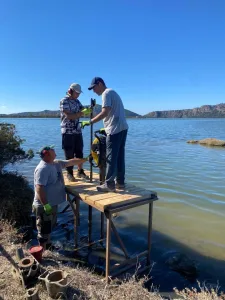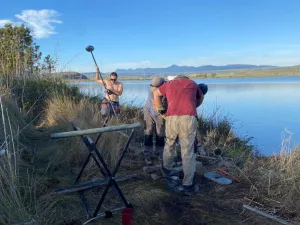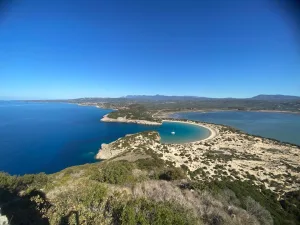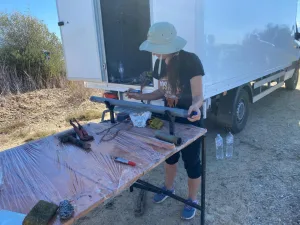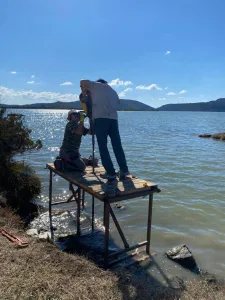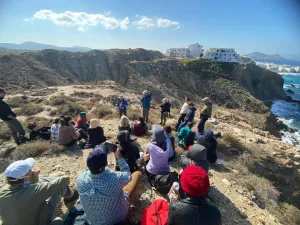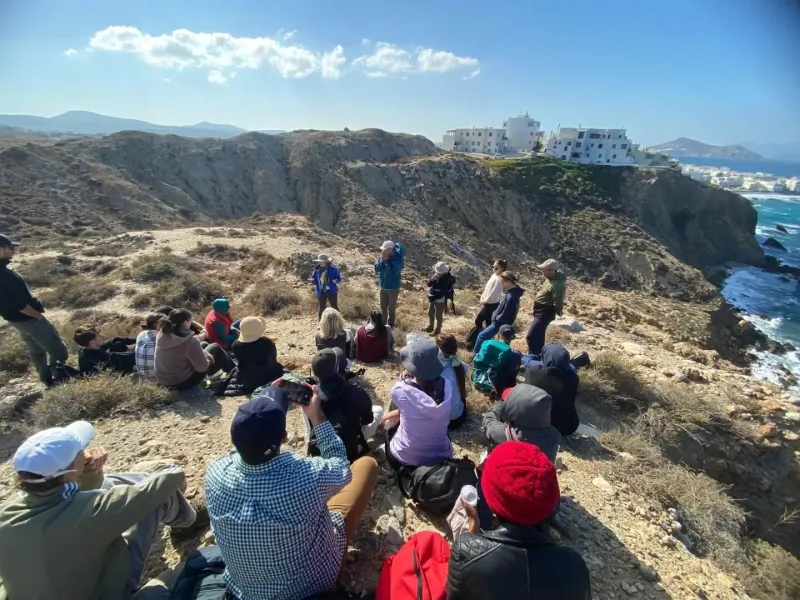A joint team of researchers from the University of Bucharest (UB) and the National and Kapodistrian University of Athens (NKUA) carried out an intensive field campaign in Greece between October 21–26, 2025, focusing on the Gialova Lagoon area in the Peloponnese Peninsula. This campaign was part of the TRACE project’s ongoing research efforts to better understand how climate change has influenced the evolution of Mediterranean coastal landscapes.
The team conducted geological drilling to collect sediment cores from the lagoon and surrounding areas, alongside producing Electrical Resistivity Tomography (ERT) profiles. These methods are essential for reconstructing the paleogeographic evolution of the region, helping to uncover how past environmental changes—including sea-level fluctuations and climate variability—have shaped the current landscape.
The fieldwork then continued from October 27 to November 2 on Naxos Island, running in parallel with the educational activities of the BIP CIVIS program “Climate Change and Landscape Evolution in the Mediterranean Context – Naxos Island”. The campaign benefited from the participation of a representative from Aix-Marseille University (AMU), further strengthening the international collaboration within the TRACE project.
Both research sites—Gialova Lagoon and Naxos Island—offer valuable archives for understanding the long-term interaction between climate dynamics and coastal landscape evolution. The combined approach of geological, geophysical, and educational activities not only advances scientific knowledge but also plays a key role in training the next generation of geoscientists.
